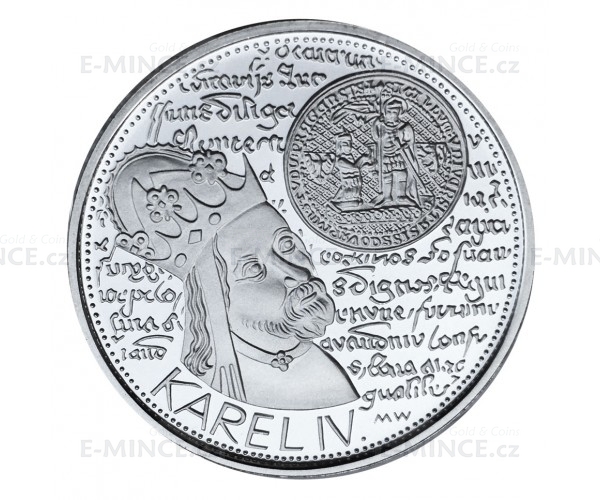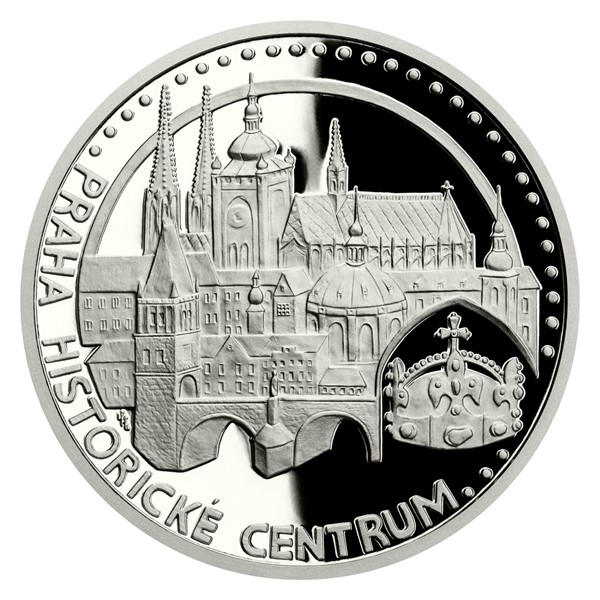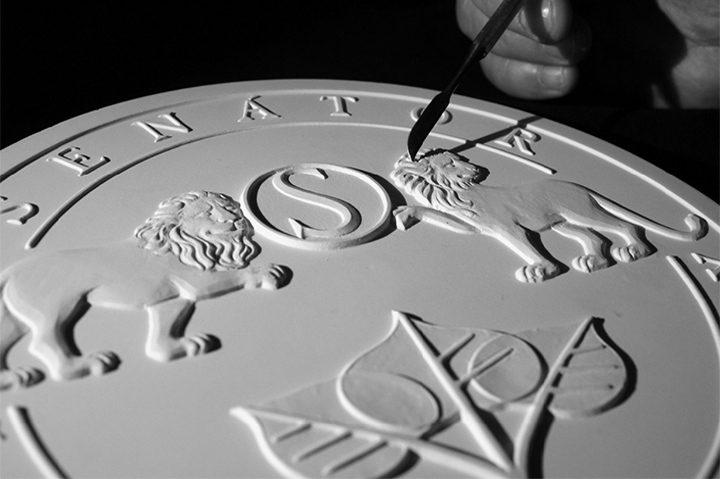Recommended News To Cnc Machining Czechoslovakia Medals
Recommended News To Cnc Machining Czechoslovakia Medals
Blog Article
How Do High-Precision Cnc Machines Cut The Design In A Die Or Master For Striking Coins Or Medals Made From Gold?
CNC machines with high precision (Computer Numerical Control) are crucial for the creation of dies or master hubs to strike gold coins or medals. This article provides a brief description of the CNC Programming Process.
A CAD program (Computer Aided Design), creates a 3D model of the design that is used for the coin.
The CAM (Computer-Aided Manufacturing) software generates toolpaths and instructions for CNC machines using the 3D model.
Select the correct material for die-cutting
High-quality and durable materials like brass, steel or alloys that are hardened are selected to be used for CNC cutting the die or master hub. These materials will stand up to the high-pressure strike process and replicate the design precisely.
Fixture and Setup
The material of choice is fixed onto the CNC machine's worktable or vice to ensure precise machining. It is crucial to secure the workpiece in a proper manner to prevent vibrations from machining.
CNC Machining Process
CNC machines use cutting instruments that include ball mills or end mills, to create a design in the form of a die or master hub.
The CNC machine takes material off the blank material blocks according to the 3D specifications.
Different kinds and sizes of cutting tools are employed to create different dimensions, contours, and details of the coin or medal design.
CNC machine moves are controlled by a computer algorithms, which guarantee accuracy down to micrometer levels.
Finishing and Refinement
Once the initial machining is completed, the die hub or master die gets honed further.
Surface finishes can be improved by finishing or polishing surfaces using hand tools or using equipment designed specifically for this purpose.
Quality Control Inspection
The final die, or hub is then undergoing a thorough inspection with the use of measurement tools like micrometers, gauges and other optical measuring instruments, to ensure it is in compliance with all design specifications.
Hardening and treatment (optional).
Certain dies may undergo additional treatments, such as heat hardening or other surface treatments to increase durability and resistance to wear during the striking process.
CNC machines are capable of reproducing intricate designs on master hubs using precision. Die machines are the critical tooling required for striking gold medals or coins with uniformity, precision, and fine details. Read the top rated CNC Machining Czechoslovakia gold medals site examples including american eagle gold coin, krugerrand, double eagles, gold bars for sale near me, 1 oz gold, saint gaudens gold coin, gold bullion price, gold coin 24k price, silver eagle coins, kruger rand and more. 
Why Do Dies Used For Striking Gold Coins Or Medals Go Through Vacuum Hardening Processes?
The technique of vacuum hardening is used in the production of gold medals or coins. The process involves heating the dies at high temperatures and then exposed to controlled conditions within a vacuum. Here's an overview of the vacuum hardening process for dies Preparation and Cleaning-
When making dies that will be used for striking coins or other medals, it is important that they are free of residues or contamination.
Loading into vacuum Furnace
The dies go into the vacuum chamber.
Evacuation of Air
The vacuum furnace removes the air in the chamber to create an environment controlled by vacuum that is free of oxygen or other gasses. This is to prevent the formation of oxidation and to guarantee uniform heat treatments.
Heating Phase
The furnace will be heated up to the required temperature in order to harden the dies. The temperature is determined by the material being used and the way it will be cured.
Bathing in high temperatures
The dies will be maintained at an elevated temperature for the time required to ensure the material attains and keeps the desired hardness.
Quenching (or Cooling)
After the soaking process, the dies can be quickly cooled with the help of specialized techniques. The rapid cooling helps the metal achieve the desired hardness.
Tempering (Optional)The Tempering Process (Optional)
In certain situations the process of tempering may follow the process of hardening. The dies are heated up at a lower temperature in order to reduce internal stress and increase durability, while preserving hardness.
Quality Control and Inspection-
To make sure they meet the hardness and strength requirements Die dies that have been hardened go through an extensive inspection and quality control.
Post-Treatment Handling-
Once the vacuum hardening process is finished The dies can undergo further processes like polishing or coating before they are used in the coin or medal striking process.
The method of vacuum hardening improves die durability, wear resistance, as well as the longevity of the dies used for striking gold or silver coins and medals. Through ensuring a controlled and contaminant-free environment it provides an exact and reliable method to make the dies harder. Check out the most popular vacuum hardening Czechoslovakia gold coins more info including gold and silver dealers, gold biscuit buy, gold bullion coins, 1oz gold price today, gold and silver dealers near me, gold eagle, $50 gold piece, coin gold bullion, 1 10 ounce gold coin, gold buy bullion and more.
What Are The Various Ways That Gold Coins Or Medals Are Coated In Order To Safeguard Them?
Coating gold medals or coins is used for a variety of reasons. This includes protection as well as improving the appearance, or creating a certain aesthetic appearance. Here are some different coating processes.
Clear Protective Film (Varies). This clear protective film, that can include lacquer as well as a polymer, helps protect the surface of the coin from the effects of oxidation. This coating preserves the original look of the medal or coin, and protects its underlying metal.
Enhancement Appearance
Gold plating, or gildingthe surface of a gold-plated coin or medal can be gilded or coated with a thin layer gold. The item will appear more elegant and attractive.
Aesthetic Aspekte
Patina or Antique Finishes - Chemical or special coatings can be used to create an antique finish. The process is designed to artificially age the surface, creating an aged, oxidized appearance.
Colorization / Coloring – In some instances, the color of specific areas on a coin, medal, or any other object is achieved by applying special coatings and enamels. The purpose is to improve design elements that create contrast, as well as enhance the visual appeal.
Anti-Tarnish Coatings-
Anti-Tarnishing Solutions - These coatings are applied to coins or medals that have intricate designs or areas that are susceptible for tarnishing. These coatings help to prevent discoloration and oxidation over time.
Specialized Coatings For Security Or Authentication
UV-Reactive Coatings. Some coins and medals are coated with a specific UV-reactive coating which reacts to UV radiation. It exposes hidden components like security codes or encryption.
Selective Coatings for Contrast
Selective Coating Removal: In certain cases coatings are removed selectively from particular regions of the medal or coin to provide contrast between coated and polished surfaces, which emphasizes design elements.
Each process has a specific goal, such as to improve the appearance or appearance of metal, enhance protection, increase security, or achieve certain aesthetic effects. The coatings can affect the visual appeal, durability and value of gold coins as well as other kinds of medals. Take a look at the recommended coating Prague Mint gold coins more examples. including apmex gold, sell gold silver near me, gold dollar coin 2000, gold penny, gold quarter dollar, today's 1 oz gold coin price, 50 dollar gold piece, st gaudens double eagle, 5 cent piece, gold bullion cost and more.
What Are The Quality Controls That Gold Coins And Medals Undergo To Ensure Their Conformity To Specifications??
After being mint, gold coins or medals undergo rigorous quality inspections to ensure compliance with specifications precision, accuracy, and quality. The checks are a series of steps. Visual Inspection
An experienced inspector inspects every coin or award to identify any surface imperfections or imperfections. They look for imperfections, such as scratches, marks and irregularities.
Weight and Dimensions
Each coin and medal is weighed to make sure it conforms to the specified dimensions, weight, thickness and diameter. Any deviation from the specifications for design could be a sign of an issue with the quality.
Composition of Metal Purity
In the course of quality assurance as part of quality checks, medals and coins are tested for purity of gold or content using various methods like XRF analysis or chemical tests. The gold content is inspected to ensure that they meet quality and quantity standards.
Edge Inspection
Inspectors inspect the edges of coins and medals to ensure uniformity, any irregularities (if there are any) and the reeding. The edges are an important location for security features, or for other design elements.
Strike Quality
In order to maintain consistency in the appearance of all coins we assess the accuracy and quality of the strike.
Corrections to Minting and Proofing Errors
For special editions or proof coins, a thorough inspection is carried out to determine any imperfections, mistakes in the minting process or discrepancies which could influence the value of the coin's collectible.
Packaging and presentation
The quality inspection extends to display and packaging and display. It ensures that coins are properly encapsulated and stored in holders or cases.
Random sampling and random checks
The coin's quality is maintained through random sampling and checking throughout the entire minting process.
Compliance and documentation
The documentation is kept of all quality checks in order to verify compliance with the regulations, standards and certification requirements. These records provide proof of authenticity and quality.
Reject Non-Conforming Items
To ensure the quality and integrity of the products that are minted and medals, any coins or coins that don't meet the standards are rejected or sent to be reprocessed.
In conducting these extensive quality tests, mints and certification bodies ensure that gold coins or medals are in compliance with the requirements in terms of purity, accuracy, appearance, and value, assuring investors, collectors, and customers of their value and authenticity. View the best Prague Mint gold medal quality control site advice. including coin gold price today, gold biscuit buy, old silver dollars, 24 karat gold coin, congressional gold medal, buy gold coins, silver price in dollar, sell gold silver near me, $50 gold piece, gold panda coin and more.